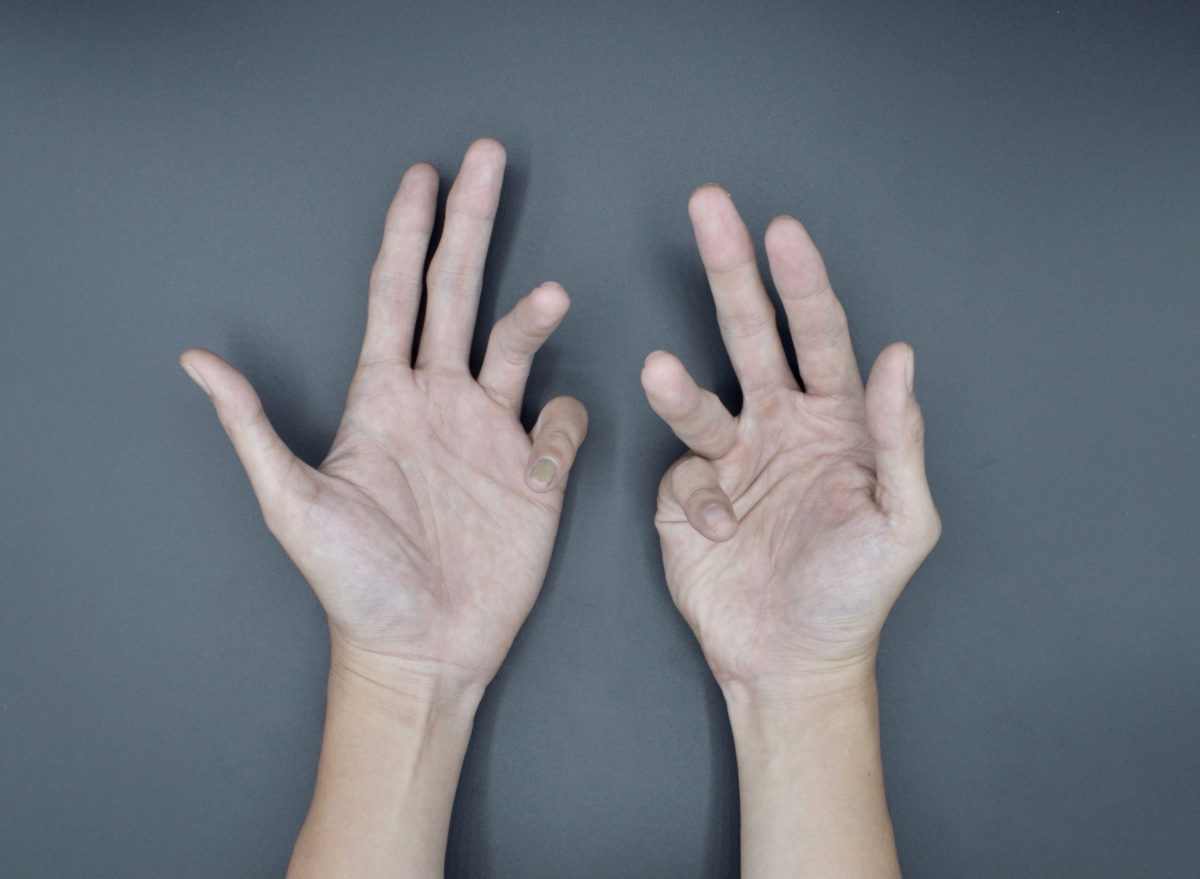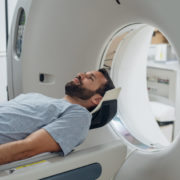
Dupuytren’s contracture is usually a painless condition in which any of the fingers, most frequently the ring and or small fingers, curl in toward the palm. This curling occurs when the palmar fascia, the layer of tissue under the skin of the hand, becomes inflamed and thickens, and then contracts.
The condition is more common in men than women, and the average age of onset is typically 55 years old. It can occur in other areas of the body, specifically the male genitalia (Peyronie’s disease) and the soles of the feet (Ledderhose disease), but regardless of anatomic location the thickened fascia is the result of the similar inflammatory process.
Dupuytren’s Contracture Causes
 No one knows precisely what causes Dupuytren’s contracture. Medical experts have identified several risk factors that may contribute to or increase the condition’s risk of developing. Those risk factors include:
No one knows precisely what causes Dupuytren’s contracture. Medical experts have identified several risk factors that may contribute to or increase the condition’s risk of developing. Those risk factors include:
- Genetics and family history
- Male gender
- A history of heart attack
- Alcoholism
- Diabetes
- Poor nutrition
- Certain medications (antiepileptic drugs)
- Northern European ancestry
Family history is one of the most decisive risk factors, so genes likely play a role in causing this condition. If someone in your immediate family has Dupuytren’s, there is a good chance you will as well.
Because Dupuytren’s occurs almost exclusively in people of northern European heritage, it is felt the origins of this disease are linked to descendants of Eric the Red which is why some refer to it as Vikings disease.
What Are the Symptoms of Dupuytren’s Contracture?
The primary symptom of Dupuytren’s is the contracture (typically painless) of the fingers. The contracture is fixed, limiting the patient’s ability to straighten the fingers or place the hand flat on a surface.It does not interfere with the ability to flex the fingers and thus grip is not compromised. As already stated, fortunately pain is an infrequent symptom.
A standard test helpful in the diagnosis of Dupuytren’s is commonly referred to as the tabletop test. You may have the condition if you cannot flatten the palm of your hand against the top of a table.
Dupuytren’s may also cause small nodules to form in the palm. The nodules are often the first signs of the condition and lead to a diagnosis for many people. They may be slightly tender, but this sensation usually goes away.
How is Dupuytren’s Contracture Treated?
If the condition isn’t causing pain or significant contracture, you may not need treatment. When it causes pain or limited hand mobility, you may benefit from surgical or non-surgical treatments and therapies.
A newer Dupuytren’s contracture treatment consists of injecting an enzyme directly into the fascia of the hand. The enzyme preferentially dissolves portions of the tough bands of tissue behind the contracture.
Another non operative procedure is called needle aponeurotomy. Using just a local anesthetic, a doctor, after numbing up the skin, inserts a needle into the tight tissue to break it up and stretch out the finger.
For more severe cases, a surgeon will remove some of the thick fasciae in the hand. You will likely need physical therapy after this procedure. Surgery is more invasive, but it also reduces the risk of recurrence.
The less invasive strategies, such as using a needle or enzymes, almost always need to be repeated after a later recurrence of symptoms.
What Are the Complications of Untreated Dupuytren’s Contracture?
Without treatment, Dupuytren’s contracture only gets worse. The contraction of the fingers becomes severe, to the point where the tips of the fingers are in the palm, making it difficult or impossible to do certain things with the hand, particularly those things that require an open palm.
The condition, while rarely painful, can be quite limiting. Dupuytren’s can affect any of the four fingers, but because the patient is able to flex the fingers it is still possible to hold objects such as a hairbrush, toothbrush, pen, golf club, garden trowel, etc. However, with advanced contracture it becomes very difficult, if not impossible, to perform certain hand gestures we often take for granted such as shaking hands, placing your hand in a glove or pants pockets or even opening the hand wide enough to hold a drinking glass.
If you have any signs of Dupuytren’s, it’s essential to consult with specialists as soon as possible. As the condition worsens, it becomes more problematic, and earlier interventions are most helpful.
We encourage you to schedule an appointment. Or, call us any time at (919) 220-5255.







